Branding legal issues
A reflective article that examines a potential lucrative market for paralegals looking for new opportunities. It examines the rise of cottage industry/craft businesses and how branding them can be commercially advantageous.
After months of lockdown and working from home, many of us have taken stock of our lives and have perhaps been in a more reflective state about our futures. The interesting thing is that a few of us have launched our own side-lines or cottage industries, as online shopping has never been so busy. One of the sectors that many love to embrace are the craft industries, and as a nation this is demonstrated by the growing number of websites offering hobbies in the arts and crafts sector. From carvings to ceramics, to jewellery to candles, homemade sells. All of these need branding to be successful in such a crowded market, in the form of brand names or trademarks. For years this has been overlooked as one of the more unglamorous areas of law not least because any lay person can themselves apply for necessary protection. However, for many a lay person, the process until learned and understood (and there is some reading around a lot of guidelines to be undertaken) can be quite daunting. For Paralegals this is a skill that can be learnt to offer basic advice to business clients. So why now? What does branding offer to the paralegal and indeed to our budding craftsmen who are looking to sell their carefully created wares? Ironically, there is a historical basis to this answer. Branding was originally introduced as a mark of quality control particularly in food production. If a meat pie had a brand name then generally speaking the consumer was hopeful of not spitting out an animal’s tooth when they bit into it, as was quite common in the Georgian era. Equally, chocolate drops, were if branded, assumed to be chocolate rather than wax drops dipped in cocoa, again a classic from the said era. A brand name is still respected as the quality mark and therefore as a marketing tool quite coveted. Having established that a brand name is desirable, can it be argued that in many ways it is essential? For if something is essential, it becomes a must have for any prospering business and naturally something that a paralegal may wish to offer a service on. Clients who are in the business of manufacturing, be it their own art or craft work, then to take it beyond a hobby enterprise, a brand name is probably essential. With a brand name there is a perception of credibility with the product. A name can be marketed far more effectively sometimes than the product itself. If the name is right it can convey whatever you want and equally subscribe to the product that is being offered under the brand name, the image that is desirable to make it sell. Candles one of the simplest forms of lighting known, is a multimillion-pound industry. The beauty of being a candle maker is that any person can set up at home with relatively little expense and soon start turning out their own product. When they get creative and start producing a range of colours, designs and scents, they may want to develop this commercially. However, it is at this point that they may hit the rocks. Yes, the product can be marketed through certain art and craft websites, but if they want to access some of the big commercial selling websites there is going to be a problem. Simply put, to list products on some of the big commercial merchandise websites or mainstream stores, you need a brand name, or you can’t do it. So how do you brand a candle? When seeking a brand, it is necessary to show that the product is distinctive enough to be identifiable to the brand name given to it. Call me old fashioned isn’t a candle a wax stick with a wick poking out of one end? How can that be made distinctive? The answer is yes and will be down to the skill of the candle maker and then in no small way the skill of a paralegal in describing it. You see to the basic wax stick with a wick on the end, can be added a different shape, oil, fragrance, mica dust to make it shimmer and then it can be sat in a votive with a design on the outside which is unique to the candle maker who has created it. It is these signature designs for example a unique swirl or geometric pattern that can lend the requisite distinctiveness to a candle and thus a brand. Moving away from the above example for a moment, the brand that is created can cover a range of products under one name. If a client has expanded their range beyond candles to include soaps and wax melts and essential oils, then again, a brand name can be attached. The distinctiveness can be afforded by containers which hold the product. This is where the would-be intellectual property practicing paralegal must become familiar with the various categories of branding and trademarks and make sure that when applying they are going for the correct category. Another good example is gin. Essentially gin in its traditional form is an alcoholic concoction derived from Juniper berries. These days it’s almost a struggle to find it on the shelves because of the wide number of variations on the original product. It is of course the variations that lend the unique distinctiveness which are all part of though not necessarily limited to making up a distinct brand. Put the product in a uniquely shaped bottle with a bespoke label and the requirements for a brand all fall into place. This is what a paralegal can guide any client on, before considering whether the product under consideration has that unique something that is needed. This is likely to be a growth area in the law, especially when in troubled times many seek to turn their erstwhile hobbies into commercial ventures. Undoubtedly there is scope for the interested paralegal to expand their practice to encompass this area and market it through the very websites that currently carry crafted goods. |
Author: Ian Grant - Lawyer
Ian is Director of Operations at the Institute of Paralegals who became a lawyer in 1994. Since that period Ian has pursued a career in the law that has covered a variety of teaching and writing. He has taught extensively to trainee lawyers on a variety of legal and practice subjects for colleges, universities and government agencies. His area of knowledge includes civil and criminal litigation, the law of torts contract and immigration law. His main area of expertise however has focused on Wills, Trusts, Tax, and Probate which he has taught, practiced law in and written texts on.




